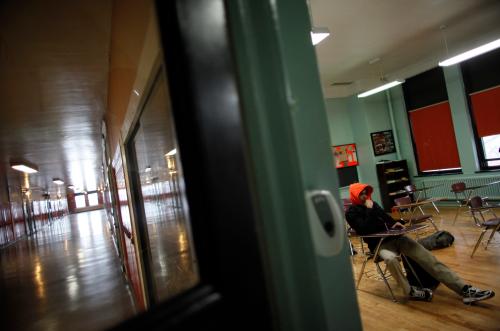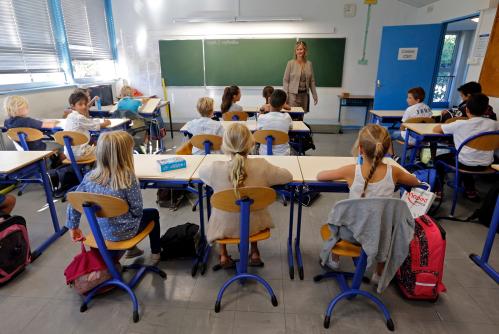The determinants of educational success in graduate school, particularly the inputs and institutional factors that might perpetuate racial and gender gaps in both graduate school and labor market outcomes, are frequently overlooked by scholars, educational administrators, and policymakers. Such oversights are troubling, as graduate students comprise a nontrivial segment of the U.S. post-secondary student population: About 15 percent of post-secondary students are graduate students and about 40 percent of outstanding student-loan debt was accumulated to finance graduate degrees.
Graduate degrees themselves are important sources of socio-economic mobility worthy of study, as they facilitate entrance into many high-status and high-paying professions central to the modern economy. The legal profession is one prominent example: Nearly all states require that lawyers hold a Juris Doctor (J.D.) from an American Bar Association accredited law school.
In a new IZA Discussion Paper, Christopher Birdsall, Raymond Zuniga, and I contribute to our understanding of the importance of law school instructors, and particularly the demographic representation of law school instructors, by studying how having a same-race or same-sex instructor in first-year required law courses affects course grades and subsequent performance and persistence in law school. We address these questions using longitudinal, administrative data from a top-100, private law school.
We find that student-instructor demographic mismatch has statistically significant, substantively large effects on students’ course grades and on subsequent grades in the same subject (e.g., having a same-race instructor in Civil Procedure I has a significant effect on the student’s performance in Civil Procedure II). The impact of having an other-race instructor is about twice as large as the impact of having an other-sex instructor, and these harmful effects of mismatch are more salient for nonwhite students, particularly nonwhite females. Similarly, we find cumulative effects of exposure to demographically mismatched first-year course instructors on persistence in law school and on the likelihood of graduation.
We obtain causal estimates for course-specific outcomes using a two-way classroom and student fixed effects identification strategy that has previously been used to investigate the causal effect of racial mismatch on community college students’ academic outcomes. Intuitively, this research design simultaneously addresses two threats to validity.
First, classroom-fixed effects ensure that students are compared to different-race peers who were in the same course and thus were exposed to the same class size, classroom environment, pedagogy, and so on. This mitigates concerns that nonwhite students or instructors were disproportionately assigned to lower-quality classrooms or less desirable time slots.
Second, student-fixed effects mean that we make within-student comparisons of each student’s performance across first-year required courses. For example, we compare the grade earned by a black student in Course A, taught by a white instructor, to the grade earned by the same student in Course B, taught by a black instructor. This mitigates concerns that unobserved student characteristics jointly determine nonwhite students’ outcomes and their propensity to be assigned to an other-race teacher.
These results shed light on the role that institutions play in perpetuating well-documented demographic wage, skill, and partnership gaps in the legal profession. For example, we find that having an other-sex instructor in a first-year required law course reduces the probability of receiving a “good grade” (A/A-) by 3 percent, and by 10 percent with an other-race instructor. This has implications for the caliber of internship opportunities afforded to students, as many law firms restrict valuable internship opportunities to students above a certain GPA threshold.
These results also have implications for gender- and race-based pay gaps in the legal profession, as there is a significant return to law school grades for students who attended top-100 law schools. There are social implications of these results as well, due to the social consequences of underrepresentation of historically disadvantaged groups in the receipt of law degrees and in the career paths of law school graduates. For example, the underrepresentation of racial and ethnic minorities in the U.S. judiciary likely contributes to demographic disparities in sentencing.
Our results are broadly consistent with well-documented benefits of having a same-sex or same-race teacher in the K-16 context. This is perhaps surprising, as explanations for the positive impacts of having a same-race teacher observed in primary, secondary, and first-year college classrooms center on “role-model effects” that are thought to be particularly salient for nonwhite, socio-economically disadvantaged, and information-poor students.
Thus, it is not obvious that similar effects should exist in elite professional school settings such as law schools, given that law students are inherently a highly selective group. Indeed, they are all college graduates who have also successfully navigated the harrowing, complex law school application process. That we observe significant effects in the law school setting suggests that the impact of representation is pervasive and likely present in many facets of society and in many social and professional interactions.
So what is to be done? These results suggest that diversity in the legal profession, and the status of women and people of color in the legal profession, would be improved by increasing the diversity of law school faculty. This is certainly important. However, doing so in the short run is limited by constraints on the supply of nonwhite and female faculty, which itself is likely a consequence of the impacts of faculty representation discussed above.
Accordingly, a policy response that is feasible in the short-run is to provide law school (and university) faculty with theoretically informed implicit bias training, which has proven effective in some early pilots. Similarly, Sean Darling-Hammond and Kristen Holmquist provide suggestions to law school faculty on how to better serve historically underrepresented students, many of which echo the theoretically informed WISE interventions and empathetic strategies advocated by social psychologists.
In short, empathy, diversity, and representation matter at all levels of education and society. Indeed, these norms are critically important to individuals, economies, and societies as they strive to reach their full potential.






Commentary
A law school instructor like me: How a professor’s race and gender can impact student performance
February 6, 2017